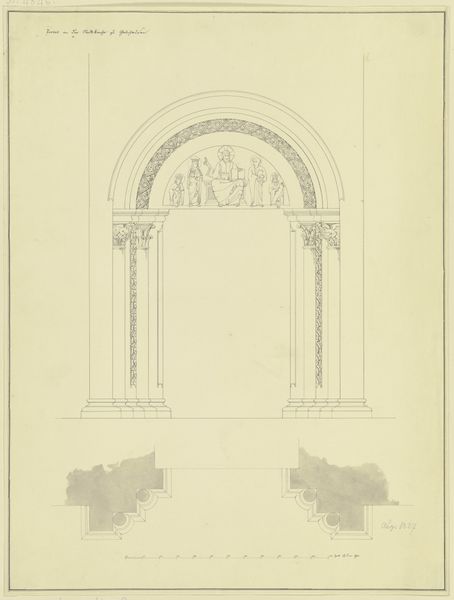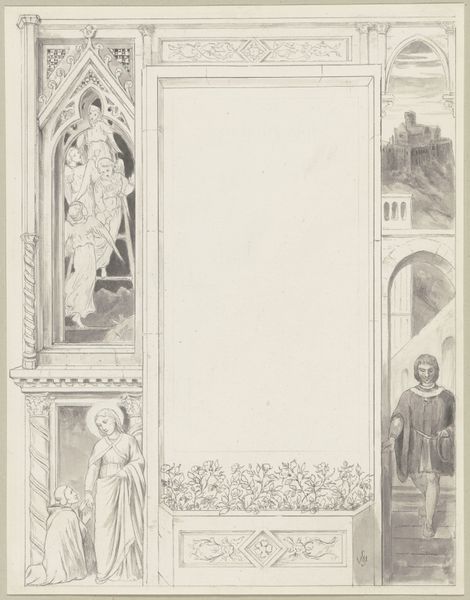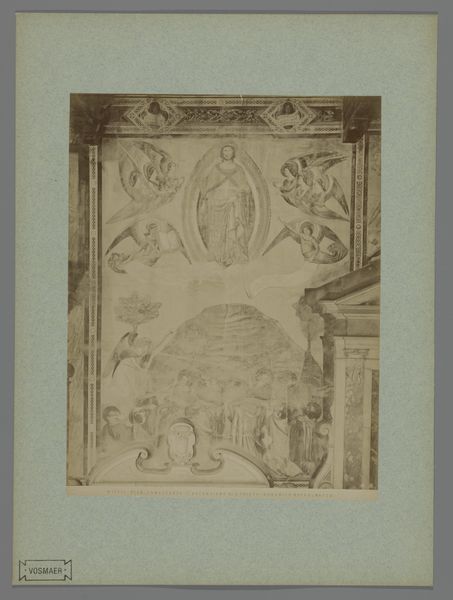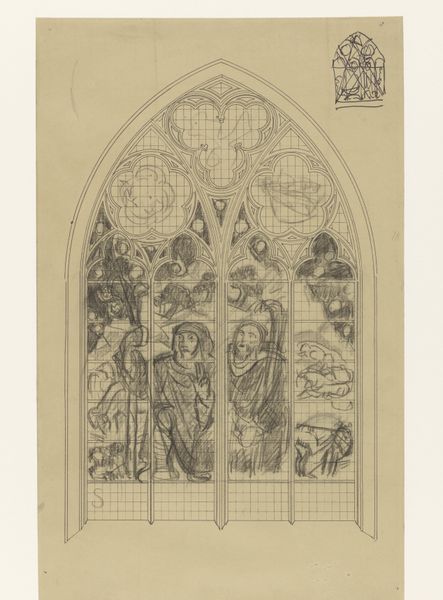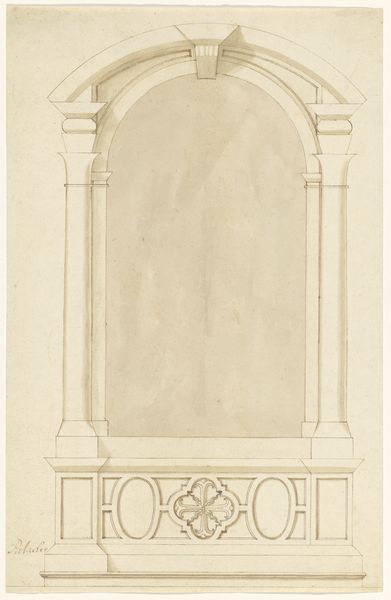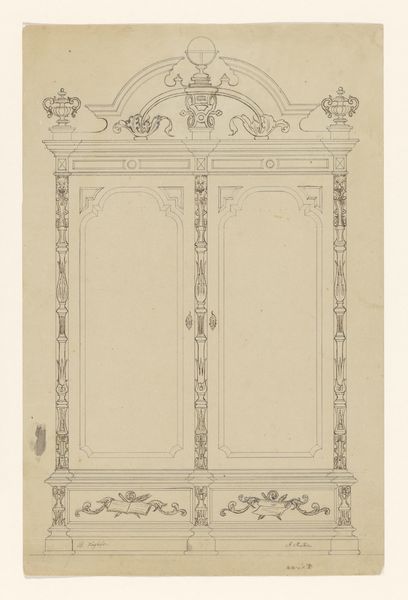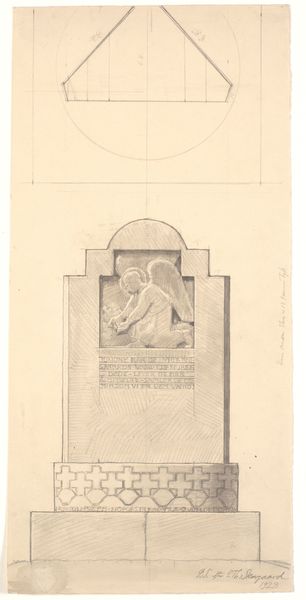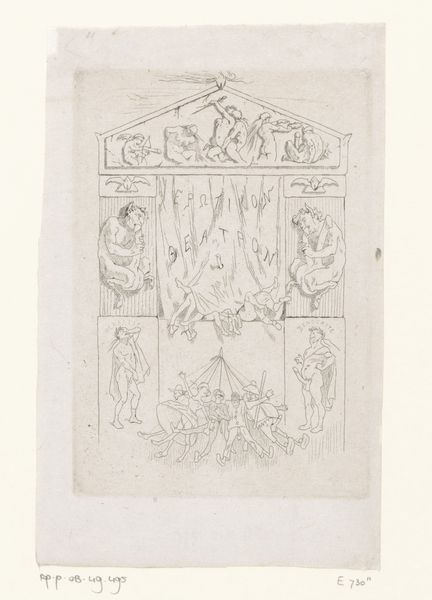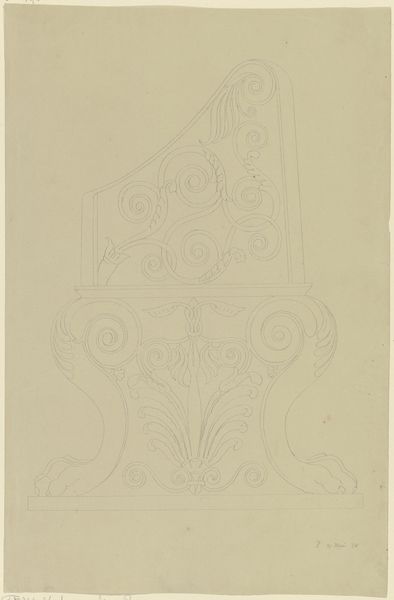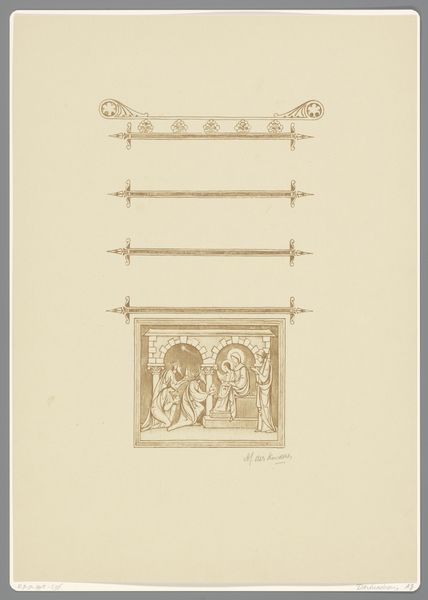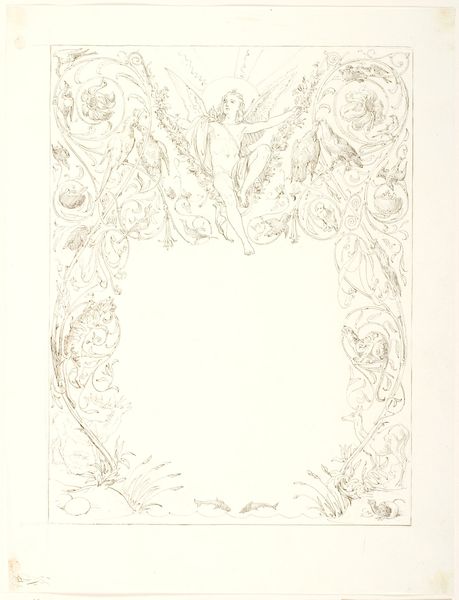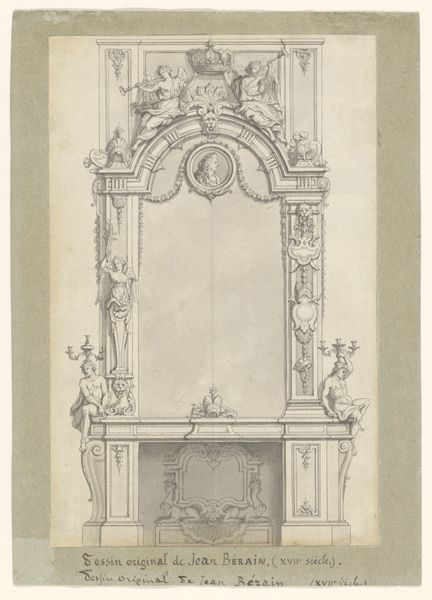
Copyright: Public Domain
Curator: Friedrich Maximilian Hessemer's drawing, "Portal von S. Giovanni Battista in Orvieto," from 1828, showcases the architectural details of a significant portal. It's currently held in the Städel Museum collection. Editor: My immediate response is drawn to the starkness. It feels almost clinical, a precise record devoid of emotional warmth despite its religious subject matter. The use of ink on paper emphasizes the architectural form. Curator: It’s important to see this through the lens of Neoclassicism and Academic Art. Hessemer, working in ink and pencil, meticulously captures the portal, embodying the period’s focus on rationalism. The artistic representation in its historical setting reveals an underlying discourse concerning ecclesiastical influence. The clean, precise lines evoke an almost mathematical rigor. Editor: I see your point about rigor, but the flatness is difficult to overlook. I'm wondering about the materiality, the actual stone this portal was built from. What was the availability of such resources, and how did the labor practices of quarrying and construction impact the design? I am very interested to think about the contrast with what is drawn here versus what is really being created on site by artisans, whose efforts are filtered through academic standards of representation. Curator: That's a vital question. There’s a tension between the grandeur of the architecture and the means by which Hessemer captured it. The paper and ink become instruments for distilling a physical space into an academic representation. I would consider, even, the extent to which the depiction of John the Baptist plays within the construction of power dynamics and identity within the Orvieto context. The artist presents not just a depiction but an argument for a specific interpretation. Editor: Precisely. This opens a wider perspective about the role of architectural drawings and documentation. They were instruments of power. Deciding which aspects to highlight, the precise materials to record. Thinking about the act of measuring and translating that three-dimensional portal to this drawing is what captivates me about it most. It gives us insights to the context. Curator: Examining these architectural drawings through this discussion reveals something complex about our relationship with the past and artistic representation. It challenges us to acknowledge both the aesthetics and underlying sociocultural nuances, when observing such artwork. Editor: Absolutely. By analyzing Hessemer's methods we can discuss a more complex image of creation in the arts. I feel as though now my understanding of its architectural context became deeper as well, looking at art in this fresh point of view.
Comments
No comments
Be the first to comment and join the conversation on the ultimate creative platform.
